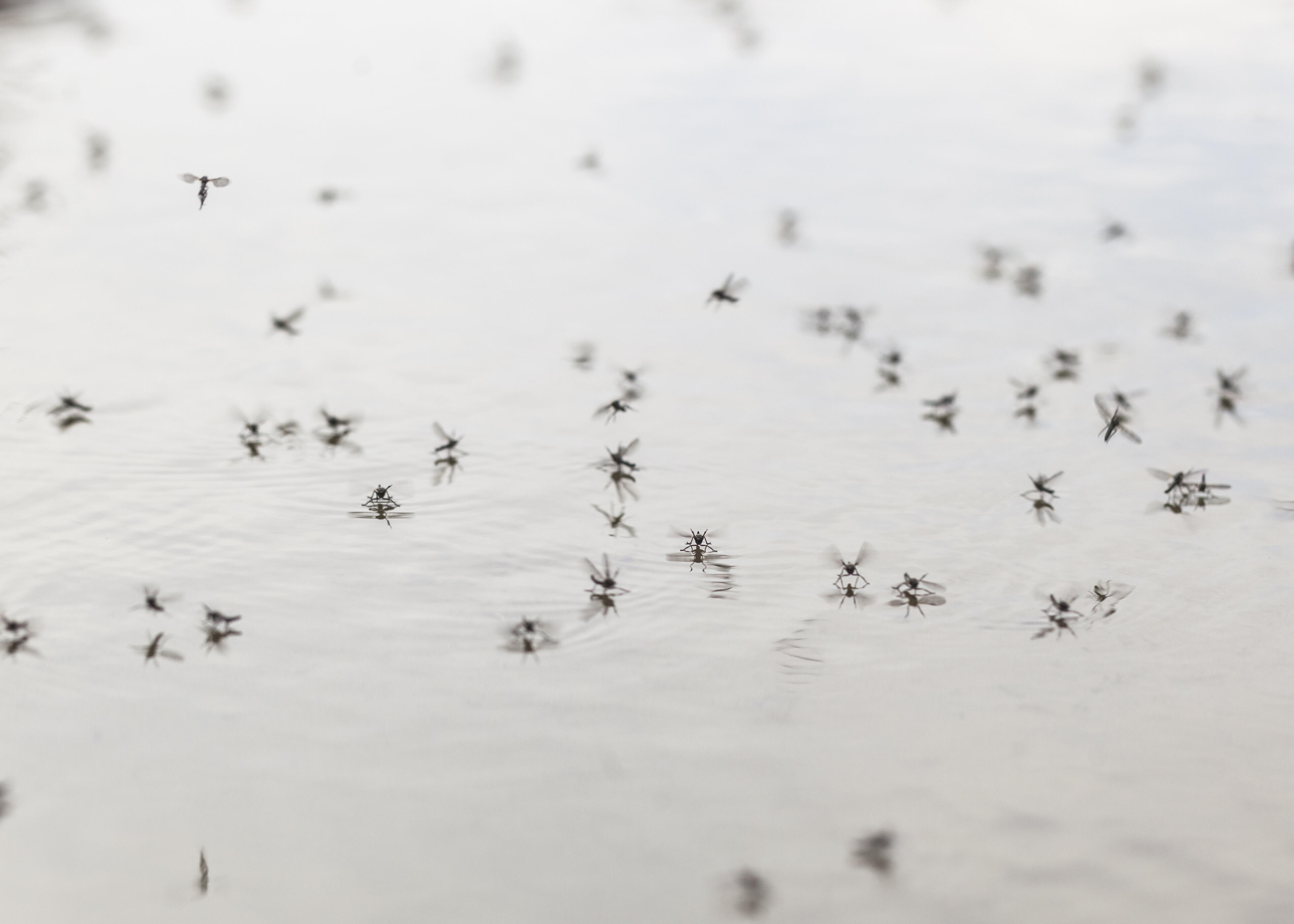
A trio of new analysis articles, led by LSTM’s Dr Gerry Killeen, have been published in British Medical Journal Global Health. The articles explain the strategic need to expand the list of vector control tools available to enable malaria elimination, outline what approaches are already are available for optimization, evaluation and scale up, and illustrate how these could be judiciously selected by national programmes to address their local needs.
The first paper explains why long-lasting insecticidal nets (LLINs) and indoor residual spraying (IRS), which have been responsible for most of the reductions in malaria burden across Africa, are nevertheless insufficient to eliminate malaria transmission. This is because these measures can only protect people when they are indoors or asleep, while some important mosquito species are biting and resting outside, or avoiding people and biting animals. Also, the growing problem of insecticide resistance is exacerbated by the impracticality of using more than one insecticide at a time for LLINs or IRS for cost and safety reasons, thus undermining impact upon malaria transmission. Progress towards elimination of malaria has therefore slowed recently, and only limited further progress can be realistically expected in the years ahead if LLINs and IRS remain the only widely-used vector control tools. Dr Killeen said: “LLINs and IRS have had massive impacts upon malaria disease burden but much more can and should be done to supplement or even replace these approaches with better methods over the longer term. Critically, the intensity of remaining malaria transmission across most remaining endemic regions of the tropics are so high that suppression, and even elimination, of entire mosquito populations will be required to eliminate it. Merely protecting individuals against bites won’t be enough.”
The second paper looks at a range of vector control technologies are now available which could be developed into practical tools for programmatic use on national scales within the decade ahead. Many well-established insecticide products for killing mosquito larvae and adults are applied across America, Europe and Australia to suppress local mosquito populations. These pro-active interventions are delivered in a decentralised way, by locally governed, funded and managed programmes, which ensure their operations are tailored to local conditions. Furthermore, a number of re-purposed and emerging technologies are available which target mosquitoes when they enter houses, feed outdoors, attack livestock, feed on sugar or aggregate into mating swarms. Many of these additional technologies, such as repellent emanators and insecticide-treated clothes could be delivered directly to individuals and households through existing distribution systems for LLINs and IRS. These approaches could therefore be scaled up relatively easily and rapidly once these technologies have been optimized and proven effective in representative malaria-endemic settings.
However, when faced with such an array of potentially effective options, plus a complex diversity of locally variable mosquito and human behaviours, how would national malaria control programmes choose the best vector control measures for their specific malaria transmission characteristics? The third paper explains how optimal vector control choices could be made in a biologically rational manner, even in some of the most resource-limited countries in the world. Specific mosquito behaviours, such as outdoor resting, outdoor feeding, feeding upon animals, and early exiting from houses, allow malaria vectors to avoid exposure to insecticides delivered to houses, but may make them more vulnerable to emerging vector control technologies that target them while feeding outdoors on humans or cattle. Scaling up interventions that selectively target any specific blood feeding behaviour increases the proportional contributions of alternative behaviours to mosquito survival, so that these can then be targeted more effectively with complementary interventions. For example, following scale up of LLINs to prevent indoor-feeding mosquitoes, surviving mosquitoes usually obtain most of their blood meals outdoors from humans and livestock, where they may be targeted with insecticidal clothing or vapour emanators and veterinary insecticides, respectively. “National malaria control programmes should now take full advantage of long-established, practical, and affordable entomological field survey methods, to identify, create and exploit opportunities for effectively targeting adult mosquitoes with a greater diversity of control measures.” Continued Dr Killeen: “The creative, adaptive, problem-solving traditions of the discipline once known as epidemiological entomology need to be urgently revived and rejuvenated at all levels of policy and practice.”
References
1. Killeen GF, Kiware SS, Okumu FO, Sinka ME, Moyes CL, Massey NC, Gething PW, Marshall JM, Chaccour CJ, Tusting LS. Going beyond personal protection against mosquito bites to eliminate malaria transmission: Population suppression of malaria vectors that exploit both human and animal blood. BMJ Global Health 2017; 2: e000198; http://gh.bmj.com/content/2/2/e000198.
2. Killeen GF, Tatarsky A, Diabate A, Chaccour C, Marshall J, Okumu FO, Brunner S, Newby G, Williams Y, Malone D, Tusting L, Gosling R. Developing an expanded vector control toolbox for malaria elimination. BMJ Global Health 2017; 2: e000211; http://gh.bmj.com/content/2/2/e000211.
3. Killeen GF, Marshall JM, Kiware SS, South AB, Tusting LS, Chaki PP, Govella NJ. Measuring, manipulating and exploiting behaviours of adult mosquitoes to optimize malaria vector control impact. BMJ Global Health 2017; 2: e000212; http://gh.bmj.com/content/2/2/e000212.